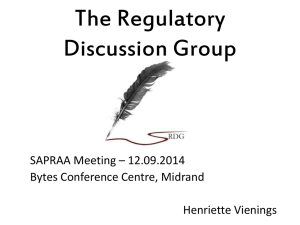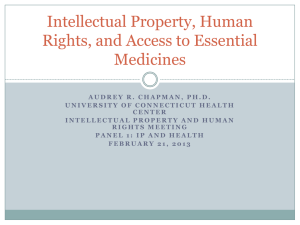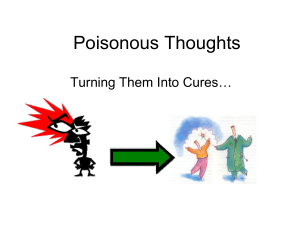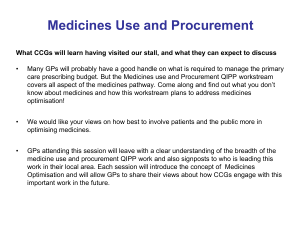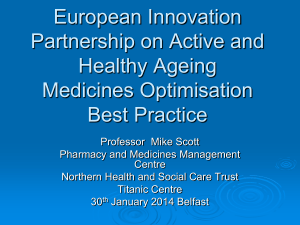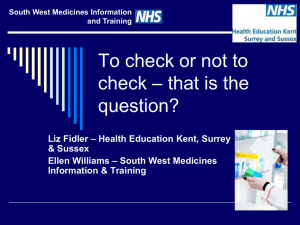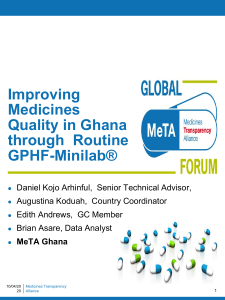THE MCC - sapraa
advertisement
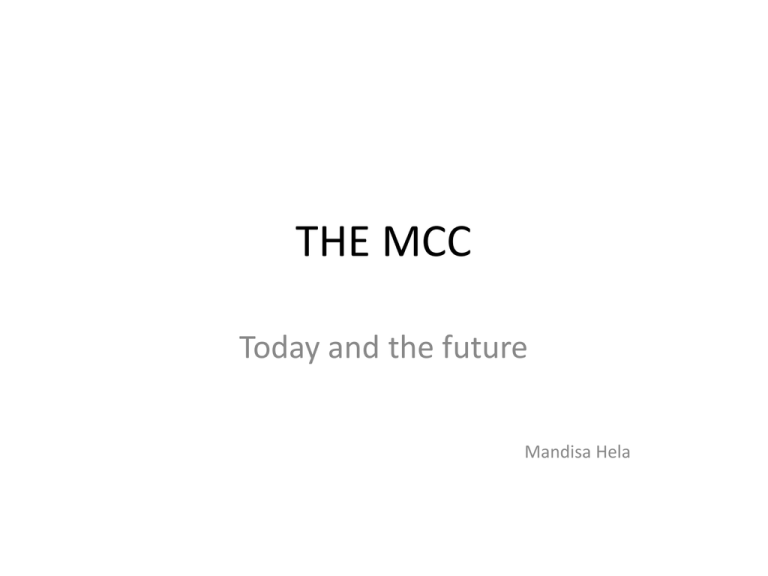
THE MCC Today and the future Mandisa Hela Let us recap on OBLIGATIONS • Public safety & protection through ensuring efficacy, safety & quality of medicines throughout their lifecycle • Risk assessment – minimization of harm and maximization of benefit • Timely access to medicines & timely action on safety & quality • Transparency & accountability • Responsiveness • Capacity to regulate 2 How is the MCC doing ? • • • • • • • Quality of reviews – well Members of PICS Supply chain integrity - reasonable Timeliness – poor Transparency – limited Responsiveness – needs improvement Capacity – suboptimal Where did we go wrong ? • Current structure conceived more than 40 years ago • Over - reliance on external experts • Internal technical expertise limited – Government department • Government implemented pro-access policies without doing an impact assessment, analysing and adapting affected units Gaps • Do not regulate complementary and alternative medicines • Do not regulate African traditional medicines • Do not regulate medical devices and in vitro diagnostics • Do not regulate cosmetics • Do not adequately regulate blood products and antivenins • Do not adequately regulate adequately starting materials - amending legislation HOW ARE WE FILLING THE GAPS • Establishment of SAHPRA as public entity Regulation of orthodox medicines Regulation of complementary and alternative medicines Regulation of African traditional medicines Regulation of medical devices and in vitro diagnostics Regulation of foodstuffs and cosmetics How are we filling the gaps ? cont. • Increasing internal capacity Numbers Skills base Attitude Improve peer review system – frequency of meetings Specialised areas -retainer system Reorganise the appeal process • Cooperation with recognised regulatory authorities on cutting edge issues Current challenges • New technologies which respond to conditions exclusively or overwhelmingly prevalent in our country e.g. MDR and XDR TB • New type of applicant e.g. Product Development Partnerships • Balancing early access to new drugs with the need for comprehensive data • Managing newer technologies e.g. biosimilars • Managing borderline devices or medicines • Maintaining access for older molecules 8 Emerging challenges • Regulation of advanced therapy medicinal products Gene therapy medicinal products, Tissue engineered products , biologicals containing GMOs Combined products with devices used as excipients or carriers Emerging / evolving areas e.g. Advanced therapies with accompanying diagnostics 9 What is happening globally? • • • • Work sharing among regulators Co-evaluation Abridged methods that avoid duplication of effort In relation to supply chain integrity: electronic symbology initiatives to ensure interoperability of tracking systems across the supply chain • Linkage between regulators and Health technology assessment • Involvement of the public in regulation 10 What is the way forward ? • Co- operation with other regulators is imperative from an efficiency, capacity and responsiveness point of view • How? What is in the tool box? What frameworks do we need? • Are currently available tools sharp enough? Are they robust enough? What can we adapt to attain a perfect fit to our needs? 11 Food choices Food choices Food choices Stepping Stones • • • • • • • • Shared vision Consistency, transparency and responsiveness Communication, education & training Common standards Enabling Legal instruments Coordination & cooperation Trust & mutual respect A pinch of optimism, an ounce of patience and a healthy dose of perseverance 15 A glimpse into the future • Is all this pointing to a global regulatory body? • If so what checks and balances are necessary to ensure national regulatory authorities are responsible for the benefit /risk assurance for their citizens? • What frameworks are necessary to ensure vigilance, responsiveness and appropriateness to different circumstances are maintained? • How will growth be ensured? 16 Conclusion • Prioritise the public good • No one can do it alone • Familiarisation with global initiatives is a MUST • Good regulatory principles still apply – It is about accurate data, data elements, trust, responsiveness, sharing, consistency & transparency • Improve on communication and legitimacy 17 Conclusion cont. • Trust is rebuilt by focusing not on what the other person did or did not do but on critiquing one's own behavior, improving one's trustworthiness and focusing attention not on words and promises but on actions, attitudes, and ways of being. Kenneth Cloke and Joan Goldsmith The Art of waking people up 18

